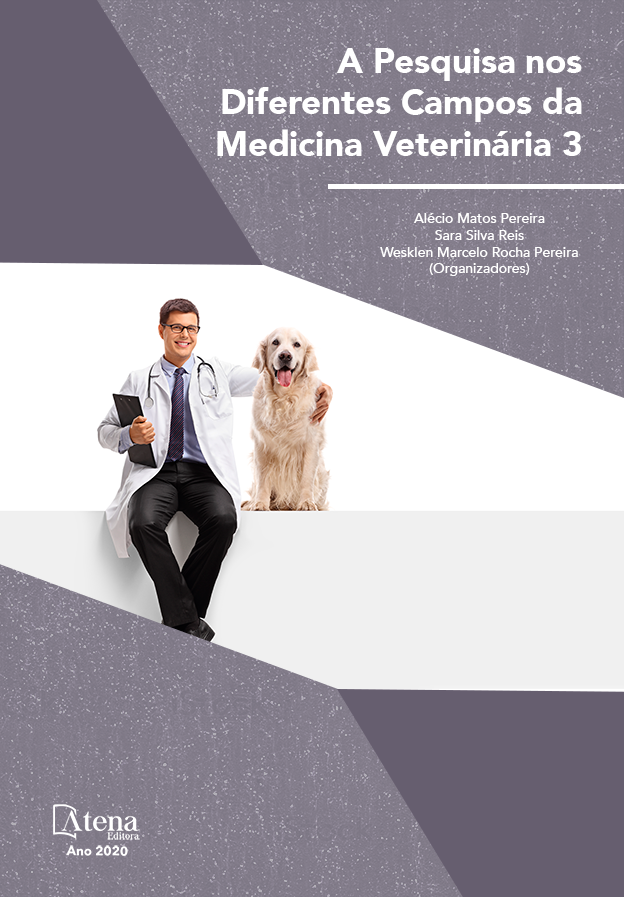
TRATAMENTO DE FERIDA ABERTA EM EQUINO UTILIZANDO INFUSÃO DE Stryphnodendron adstringens ASSOCIADA A AÇÚCAR CRISTAL – RELATO DE CASO
A equideocultura brasileira detém o maior rebanho da América Latina. Por ser uma espécie que possui comportamento explosivo, está predisposto a sofrer traumas e danos à integridade da pele. Associa-se a isso a dificuldade cicatricial própria desses animais. Nesse contexto, a cada dia surgem novas terapias com a finalidade de reduzir o período de cicatrização das feridas cutâneas, e que resultem na formação de um tecido que seja o mais semelhante possível ao tegumento saudável. O Stryphnodendron adstringens (barbatimão) é uma leguminosa nativa encontrada no cerrado brasileiro. Sua casca é espessa, tendo como princípio ativo mais importante o tanino, apresentando assim efeito adstringente e cicatrizante. Desta forma, estudar criteriosamente e apresentar os efeitos cicatriciais do barbatimão torna-se mister para que essa planta possa ser mais conhecida e adotada largamente no tratamento de feridas abertas nas diversas espécies animais. Neste relato, foram descritos os procedimentos adotados ao longo de vinte e três semanas de tratamento de um equino que sofreu vasta lesão de pele e perda de tecido muscular, assim como a evolução da ferida e o quadro geral do animal. Após o acidente um médico veterinário foi chamado para suturar a pele, mas devido à gravidade do ferimento, a inflamação e o local não possuir boa cicatrização por se tratar de uma área com movimentação intensa, houve deiscência dos pontos; foi realizado a retirada das margens necrosadas da ferida, dando início ao tratamento de ferida aberta. Foram realizadas medições a cada sete dias para avaliar a velocidade de fechamento e a qualidade da cicatrização até o fechamento total da lesão. Na pele do equino deste relato, o Stryphnodendron spp. foi eficiente quando utilizado como cicatrizante e antisséptico, sendo que o processo foi mais acelerado nas seis primeiras semanas. Além disso, não houve formação de tecido de granulação exuberante.
TRATAMENTO DE FERIDA ABERTA EM EQUINO UTILIZANDO INFUSÃO DE Stryphnodendron adstringens ASSOCIADA A AÇÚCAR CRISTAL – RELATO DE CASO
-
DOI: 10.22533/at.ed.54620071221
-
Palavras-chave: Plantas medicinais. Barbatimão. Feridas de segunda intenção. Equinos.
-
Keywords: Medicinal plants. Barbatimão. Wounds of second intention. Equines.
-
Abstract:
The Brazilian equine culture has the largest herd of Latin America. Being a species that has explosive behavior, it is predisposed of suffering trauma and damage to skin integrity. It is associated to that the difficulty of healing of these animals. In this context, in each day arise new therapies with the purpose of reducing the healing time of skin wounds and resulting in the formation of a tissue which is as similar as possible to the integument healthy. The Stryphnodendron adstringens (barbatimão) is a native legume found in the Brazilian biome cerrado. Its bark is thick, being the tannin most important active ingredient, thus presenting astringent and healing effect. This way, study with care and present the scarring effects of barbatimão becomes mister so that this plant can be better known and widely adopted in the treatment of open wounds in several animal species. This report will describe the procedures adopted over twenty-three weeks of treatment of an equine that suffered extensive skin damage and loss of muscle tissue, as well as the evolution of the wound and the overall picture of the animal. After the accident a veterinarian was called to suture the skin, but because of the severity of the injury, inflammation, and the place does not have good healing because it is an area with intense movement, the points did not resist; It was performed the edges removal of necrotic wound, starting the treatment of open wound. Measurements were made every seven days to evaluate the closing speed and quality of healing until the total closure of the lesion. In the skin of the equine treated on this report, the Stryphnodendron spp . was effective when used as for healing and antiseptic, and the process was faster in the first six weeks. In addition, there was no exuberant granulation tissue formation.
-
Número de páginas: 12
- Henrique Fernandes Giovanoni
- Rodrigo Fernandes Giovanoni
- PATRICIA NATALICIA MENDES DE ALMEIDA


